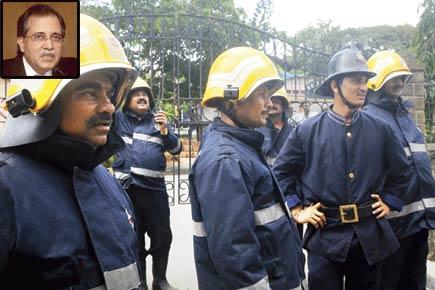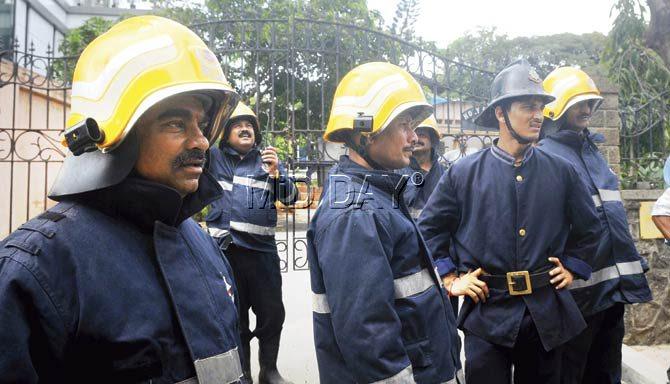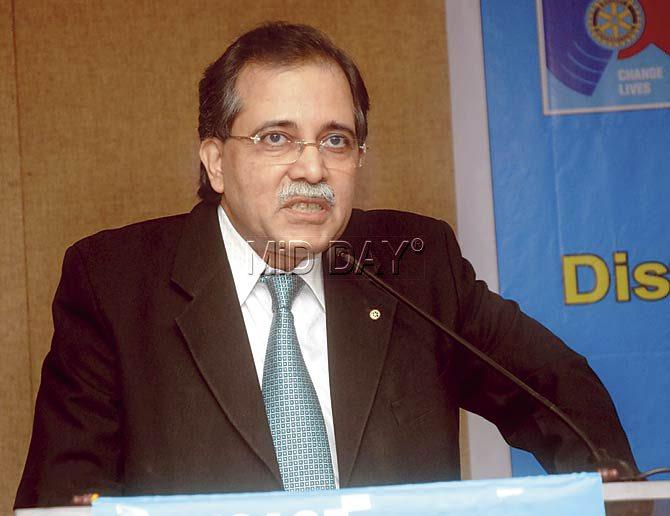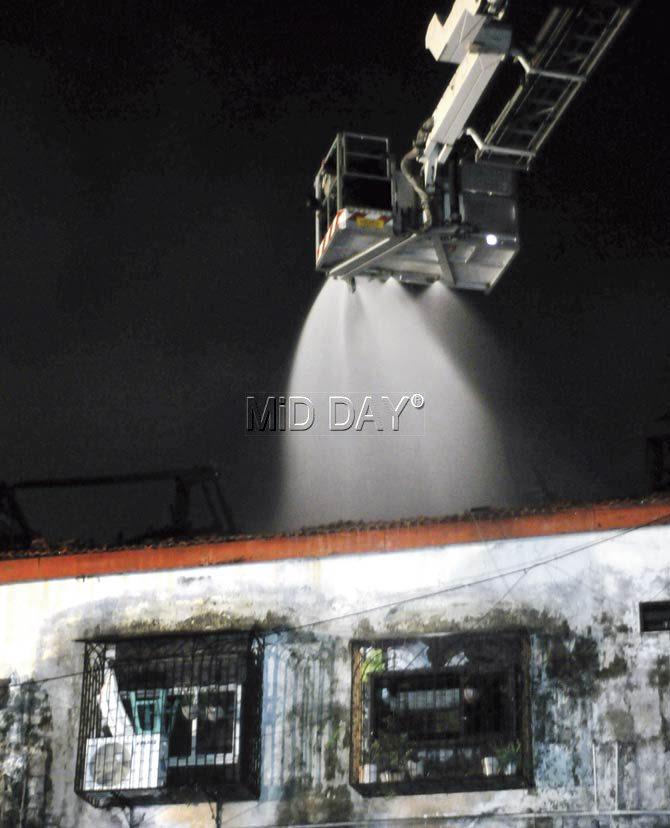Dr Sunil Keswani, director, National Burns Centre in Airoli, on the urgency to close the gap between demand and supply when it comes to skin donation and the need for more burns centres

More awareness about pledging organs and a push for organ donation has resulted in an increase in the number of donors, though skin donation is still mired in misconception and relatively obscure.
ADVERTISEMENT
 The fire brigade officials are ready to tame the flames during a mock drill at the Mumbai Metro. Pic/Nimesh Dave
The fire brigade officials are ready to tame the flames during a mock drill at the Mumbai Metro. Pic/Nimesh Dave
A recent spate of fires in the city have brought the paucity of skin donation into focus. Here, eminent cosmetic surgeon, Dr Sunil Keswani, director National Burns Centre in Airoli (Navi Mumbai) the only burns centre in Mumbai and also reputed to be one of the best in Asia, talks about all aspects of skin donation. An interview with Dr S Keswani.

Dr Sunil Keswani feels many people are ignorant about skin donation and that holds them back. Pic/Sameer Markande
Q. What are the current trends in skin donation?
A. Mumbai needs 200 skin donations per month but on an average there are only 50 donations per month. There is a huge gap between the need and supply. To increase skin donations, we are creating awareness with eye donation. If a person is willing to donate one organ, then he or she will be open to more donations.

An oil depot at Wadala had a suspect leakage which lead to a major fire. Pic/Atul Kamble
Q. What is the current awareness level?
A. The level of awareness when it comes to skin donation is very poor even in the medical fraternity. A few medical interns did a survey a month ago where they spoke to 200 people from the city who were educated and held reputed jobs. They were asked if they knew about skin donation and only 2/5 knew or had heard of it. When asked if they would donate their skin 4/5 people agreed without much hesitation. This is a clear example that educated people in the city are unaware of skin donation.

Firemen rush in to put out the fire at Bandra Linking Road. Pic/Rane Ashish
Q. Has awareness been growing or do you think a lot more has to be done on this account?
A. On our part, doctors who deal with skin donation work with various NGOs and try to create awareness. But only when someone’s family member is in need does one think of donation. Otherwise, people are blissfully unaware. There is a need for more awareness especially from the government. Also, television serials need to find creative ways to incorporate skin donation awareness in their plots. This will surely increase the awareness and the donation numbers will see a rise for sure. Social media too needs to be actively used to create more awareness.

The fire brigade try to douse the flames at Dagadi Chawl in Byculla. Pic/Satyajit Desai
Q. How do people pledge their skin? There are donor cards for eyes, etc. What about skin?
A. People can sign up for skin donation at the National Burns Centre, Airoli or their family members can be informed of this wish. Once the family donates the skin — a thank you certificate is given. The final decision of donation lies with the next of kin. If a person pledges his or her skin and the family objects then we cannot take the skin. The decision of skin donation has to be made within six hours of a person’s demise. If people do sign up they get a donation identity card.
Q. What are the main barriers holding people back when it comes to skin donation?
A. There are many myths where people feel that if they donate their body parts, in the next life they will be born without it. Also, though no religion bans donations, many people seek to blame religious practices for them opting to not pledge their body parts.
Q. Is skin donation used only for burns? Is there any other kind of injured person who could benefit from it?
A. Though burn victims are the ones who need most skin, they are not the only ones who are helped. As opposed to organ and blood donation, the skin is used as a temporary cover. So the donated skin is used for orthopedic injuries, cancer patients, those who have met with car accidents, for diabetics – basically for any injury that involves a large open wound. At the end of the day, ones own skin will grow back, but till that time this skin is used as a temporary cover.
Q. Do you have a skin bank?
A. Yes, we have a skin bank. The skin is refrigerated in glycerol, a solution that can be used to preserve skin for upto five years. But the skin generally doesn’t last for more than a week or a month, since the demand is so high.
Q. How do these skin banks function? Are they like blood banks?
A. Skin banks are not like blood banks, since there is no need for blood group matching when the skin is used. As it is a temporary cover, it is used as dressing and not as a replacement. The lost skin can only be replaced by one’s own skin.
Q. Post death, what is the family’s reaction by and large when the donation team reaches the home of the deceased to take the skin?
A. Most family members are very open to donation since often they are the ones who make the decision to donate the skin. But there have been times when some family member has objected to donation and then the team has had to return because of disagreement from the next of kin.
Q. There is a perception that the body is left in a mutilated condition once the skin is taken. That is the reason the family is reluctant to go ahead with the skin donation even if pledged...
A. When skin is taken from a cadaver or a deceased person we take it from the thighs and the back. These parts are not seen and the team embalms the parts so that there is no bleeding. There is some reluctance due to the lack of information of the procedures done. We do not peel skin from the full body, only a small portion of skin is taken from fleshy body parts of a person between 18 and 80 years of age who is healthy and has no skin disease and no HIV or AIDS. Skin of persons suffering from diseases like Hepatitis B and C, sexually transmitted diseases, skin cancer, active skin disease and septicemia are considered unfit for donation. At the time of skin donation and harvesting, a blood sample from the body of the deceased is also taken and necessary tests are carried out at the skin bank.
Q. How much skin does a burn victim need? It depends on the burn injuries but on an average...
A. One burn victim needs skin from two donors. There is a need of 20-30 per cent because we use skin to graft deep wounds; the superficial injuries heal over time. So these parts are not covered. Generally, the skin covering is used for 2-3 weeks as a plasma protein to prevent infections to the patients who have lost skin and to reduce the pain. There is less need for antibiotics this way and their healing takes place much faster.
Q. There is a reluctance to open burn wards in hospitals. Comment.
A. Lack of awareness is the major cause of this reluctance.
Q. Does the city need more burn centres?
A. Yes, it does.
 Subscribe today by clicking the link and stay updated with the latest news!" Click here!
Subscribe today by clicking the link and stay updated with the latest news!" Click here!






